System & Organization Controls 2 (originally called Service Organization Controls 2), commonly referred to as SOC 2, is a set of guidelines aimed at safeguarding customer data by enforcing rigorous security measures. This reporting standard is an initiative of the American Institute of Certified Public Accountants (AICPA) and assesses how effectively a service organization’s security processes are functioning while reinforcing confidence between clients and their service providers.
To achieve and uphold SOC 2 compliance, organizations must adhere to relevant trust services criteria regarding the protection of sensitive information. SOC 2 compliance is valid for approximately one year from the time the certification is complete and necessitates ongoing audits for continual adherence. This ongoing scrutiny ensures that organizations remain vigilant against new security challenges and continue to implement strong control mechanisms.
Key takeaways
- SOC 2 is a reporting standard that communicates how organizations protect customer data through strict security controls, enhancing trust between service providers and clients.
- Compliance with the five Trust Services Categories—security, availability, processing integrity, confidentiality, and privacy—is essential for achieving SOC 2 compliance and safeguarding sensitive data.
- Organizations can utilize tools like Thoropass to streamline the SOC 2 compliance process, enhance operational efficiency, and effectively leverage SOC 2 for business growth and competitive advantage.
Understanding SOC 2 certification
To start, let’s get one thing straight, SOC 2 is not a certification in the traditional sense but rather a type of audit report. That’s why it’s more accurately referred to as a SOC 2 attestation. SOC 2 compliance is a reliable indicator of a service organization’s dedication to maintaining robust data security within its systems. It helps to establish confidence with clients, business partners, and investors by confirming that the organization follows industry-recognized best practices and is fully equipped to handle customer/client information securely, ensuring the safeguarding of customer interests and confidentiality.
The five trust services criteria (or categories)
The foundation of SOC 2 compliance lies in adhering to five Trust Services Criteria (TSC), formerly referred to as Trust Service Principles.
- Security
- Availability
- Processing integrity
- Confidentiality
- Privacy
These categories are key to upholding secure system operations that involve handling customer data effectively—ensuring its security, availability when needed, confidentiality against unauthorized disclosure, the completeness, accuracy, and timeliness of system processing, and the privacy of personal information held by organizations or systems.
1. Security
The security principle or category is essential for protecting systems from unauthorized access and preventing potential breaches and misuse. To maintain robust protection, service organizations implement a variety of security controls, including:
- Access controls
- Encryption techniques
- Firewall deployment
- Intrusion detection mechanisms
- Continuous security monitoring procedures
- User authentication protocols
Important note: Security is the only TSC required in any SOC audit because it not only sets overarching security standards for your company but also overlaps with the others.
2. Availability
Availability ensures that your systems are running and accessible to customers when they need them most. For example, Service Level Agreements (SLAs) with your customers are a great way to show you are able and committed to meet uptime requirements. It’s a key criterion for startups that need to guarantee their users can access data and services during critical moments.
3. Processing integrity
Processing integrity ensures the accuracy and completeness of data processing, managing the prompt detection and resolution of any processing errors. It safeguards against unauthorized changes to data during its input, storage, and output.
4. Confidentiality
Confidentiality pertains to the management and safeguarding of sensitive information, whether it’s personal data or proprietary business details like strategic plans, financial records, or legal contracts, that an organization must keep secure.
Beyond the security measures already mentioned, the confidentiality principle (or category) provides a framework for identifying sensitive information, ensuring its protection during use, and securely disposing of it when it’s no longer needed.
5. Privacy
Privacy involves the responsible management of personal data, such as individuals’ names, addresses, emails, Social Security numbers or other identifiers, purchase records, and even criminal backgrounds.
While privacy focuses on the protection of customers’ personal data, confidentiality extends to safeguarding any sensitive information that an organization has committed to keeping confidential.
Different types of SOC 2 reports: Type 1 and Type 2
Two distinct classifications exist for SOC 2 reports: SOC 2 Type 1 and SOC 2 Type 2. Each report plays a unique role with different assurances regarding an organization’s control environment. Grasping the differences between these reports is key for entities pursuing SOC 2 compliance and striving to live up to their customers’ standards.
SOC 2 Type 1: A compliance snapshot in time
SOC 2 Type 1 is best understood as a snapshot that captures your company’s adherence to security protocols at one point in time. One key advantage here is immediacy: Type 1 offers immediate visibility into how well your firm safeguards sensitive data, providing startups and established businesses alike with critical leverage for gaining market advantage or sealing prompt business agreements. It also allows you to evaluate the design of the controls you plan to implement—consider it like a blueprint.
Offering expedited assessment turnaround and affordability, the quicker-to-achieve and less expensive SOC 2 Type 1 works well for most service organizations—particularly when swift verification is imperative for pressing business engagements.
SOC 2 Type 2: Testing operating effectiveness over time
In contrast to SOC 2 Type 1, SOC 2 Type 2 offers a detailed evaluation of how well an organization’s security controls function over time.
A SOC 2 Type 2 report is often recognized as the gold standard. It provides robust assurance about an entity’s compliance measures regarding the effectiveness of its internal controls over time.
Determining which SOC 2 type to pursue, whether Type 1 or Type 2, should be influenced by multiple considerations, such as:
- Your organization’s needs
- The sensitiveness of the data you’re handling
- What exactly your clients or partners demand
In general, we recommend that most businesses start with a Type 1 and then build to a Type 2 unless a specific client requires a Type 2 immediately. However, the type of report can depend on how urgently businesses need compliance and whether they will eventually need a Type 2 report.
Seven steps to achieving SOC 2 compliance
It’s important to note that the Type 1 and Type 2 audit processes are different, so your organization’s approach to SOC 2 compliance will depend on which type they’ve chosen to pursue. A SOC 2 Type 2 audit focuses on a period of time with the observation period chosen by management.
1. Choose TSCs
Regardless of the SOC type being pursued, organizations must first determine which of the five Trust Services Criteria they will include in their SOC 2 report. They should define the extent of the audit according to their particular services and operational requirements. The type of information and data stored or transmitted by a business should determine the applicable categories and underlying trust services criteria.
2. Perform a gap analysis and develop a remediation plan
A compliance team examines the practices and procedures your organization has in place and performs a risk assessment to identify gaps. Based on the results of this gap analysis, a strategic remediation plan is set to tackle SOC 2 in the most efficient way possible.
3. Implement stage-appropriate controls
Depending on the scale and maturity level of your business, you may need different controls. For example, enterprises will likely need different controls in their SOC 2 report compared to startups. From logging and monitoring to HR tasks and vendor management, a compliance team can identify ways to save time and money by implementing the correct tools and processes.
4. Perform a risk assessment
After the TSCs have been selected, management should perform a risk assessment against each of the applicable Trust Services Criteria. This crucial part of the audit helps management identify the controls to be included in the report.
5. Prepare for your audit
This preparation step requires gathering evidence of implemented controls. It also means preparing an internal team to answer questions and work with auditors throughout the audit process.
Now is also the time to select your auditor. Auditors performing SOC 2 audits must be from firms or agencies that hold accreditation from the American Institute of Certified Public Accountants (AICPA), ensuring they have the requisite skills and adhere to established professional guidelines. We also advise that your selected auditor brings experience in conducting SOC audits, preferably within the context of your particular industry sector. Lucky for you, solutions like Thoropass now exist to make this step even easier. Thoropass’s OrO Way includes your auditor in the conversation from day 1, so you won’t run into any surprises or gaps along the way and the audit is a seamless process.
6. Audit time!
A SOC 2 audit involves a thorough examination of the design and operating effectiveness of an organization’s controls by an accredited CPA. SOC 2 audits last between two weeks and a couple of months, depending on the number of questions or follow-ups from the auditors. Though businesses cannot technically fail a SOC 2 report, deficiencies will get reported ‘as is’ as it relates to the ‘as of’ date of the report (SOC 1) or the period under examination (SOC 2), and while you can’t go back and correct discrepancies you will have the opportunity to respond.
During the actual auditing procedure, reviewers assess how well a company complies based on its enacted security controls. Once completed, continuous attention must be directed towards resolving any issues revealed through the audit examination so as to preserve ongoing compliance with SOC 2 criteria.
7. Maintain and monitor compliance over a 12-month period
SOC 2 audits are typically performed on an annual basis in accordance with client expectations. We recommend that our clients set up integrations to automatically collect evidence and monitor practices over time. This helps avoid heavy time commitments from team members and continues to secure information.
Benefits of using Thoropass for SOC 2 compliance
Thoropass revolutionizes the conventional SOC 2 audit process by delivering a smooth and controlled experience, optimizing your organization’s time and resources. It eases the complexities often encountered during audits by streamlining the SOC 2 compliance procedure, thereby increasing operational effectiveness with the aid of cutting-edge software solutions and professional guidance.
Thoropass’s benefits includes:
- Expediting the audit timeline
- Offering thorough support throughout
- Ensuring that data security measures are robust against future challenges
This positions Thoropass as an optimal choice for entities aiming to secure their path to SOC 2 compliance efficiently while avoiding undue complications.
Accelerated audit process
By incorporating Thoropass into processes, organizations can expedite the audit process by an average of 67%, effectively accelerating the path to SOC 2 compliance and conserving critical time. This notable reduction in time frees up resources to focus on broader compliance strategies and improves operational efficiency.
With Thoropass, companies can streamline their approach to becoming audit-ready more quickly, guaranteeing continuous adhesion to SOC 2 requirements. Our solution facilitates a smoother ongoing compliance experience for businesses committed to meeting these important industry benchmarks.
Comprehensive support
Thoropass offers a unique blend of AI-driven technology and in-house experts. The combination of sophisticated resources and specialized guidance guarantees comprehensive help throughout every phase of achieving SOC 2 compliance.
By providing customized assistance, Thoropass enables organizations to overcome the intricacies associated with SOC 2 compliance. This approach renders the process not only more streamlined but also cost-effective for businesses.
Future-proofing data security
Undergoing a SOC 2 audit with Thoropass sets the stage for obtaining additional certifications down the line, including ISO 27001and HITRUST. This integrated multi-framework approach to compliance primes organizations to maintain robust data security, keeping them at the forefront of defense against evolving security risks and regulatory changes.
Thoropass assists entities in strengthening their stance on data security, offering a reliable base that supports the attainment and preservation of diverse security credentials.
Leveraging SOC 2 compliance for business success
Achieving SOC 2 can substantially boost trust among customers and create avenues for new business ventures. Demonstrating measures of data protection fosters confidence with stakeholders, which is crucial in securing more substantial contracts that enhance revenue potential. Consistently adhering to security standards by undergoing SOC 2 audits presents opportunities for expansion and offers a competitive advantage.
Sales enablement
For sales teams, the SOC 2 report serves as an essential tool when engaging with prospective clients—streamlining business interactions and showcasing the organization’s dedication to stringent security protocols. Utilizing the distinction provided by SOC 2 compliance propels business development and sets organizations apart from their competitors.
Customer confidence and loyalty
Showcasing robust security measures and operational consistency with the help of SOC 2 compliance markedly bolsters consumer confidence. This increased level of trust plays an essential role in establishing lasting commercial partnerships and obtaining a competitive edge in the marketplace.
Competitive advantage
Achieving SOC 2 signals a dedication to security and operational superiority, giving companies a competitive edge. Companies can use their SOC 2 compliance as a marketing tool to stand out from competitors and draw in new clientele.
Marketing
Marketing initiatives that incorporate a SOC 2 report can significantly underscore an organization’s dedication to data security, thereby appealing to prospective clients.
Embedding the official SOC 2 badge on your website, press releases and other marketing collateral, your organization reinforces its commitment to both security and regulatory adherence in the public eye. Promoting their SOC 2 compliance through social media channels also expands visibility and fosters interaction with existing as well as potential customers.
Conclusion: The start of an ongoing commitment
SOC 2 is not a simple box to check; it symbolizes an ongoing commitment dedicated to securing your customer’s sensitive data while fostering trust with all involved parties. Attaining and sustaining SOC 2 adherence demands consistent dedication and agility in adapting to evolving regulations and benchmarks. Prepare yourself for continued vigilance!
More FAQs
What are the two types of SOC 2 reports?
There are two variations of SOC 2 reports, namely Type 1 and Type 2. The former provides a description at a specific moment, whereas the latter encompasses an interval of time and evaluates the efficacy of controls.
What are the five Trust Service Criteria (TSCs) covered by SOC 2?
SOC 2 encompasses the evaluation of service providers’ controls and processes through five Trust Service Criteria, which include security, availability, processing integrity, confidentiality, and privacy. These categories and underlying criteria are crucial in assessing the trustworthiness of service operations.
How often should SOC 2 audits be performed?
You should perform SOC 2 audits annually to ensure ongoing compliance and security.
How does SOC 2 differ from SOC 1?
SOC 2 and SOC 1 are both reporting standards developed by the American Institute of Certified Public Accountants (AICPA), but they serve different purposes. SOC 1 reports focus primarily on a service organization’s internal control over financial reporting. These are important for organizations that impact their client’s financial statements through the services being provided.
In contrast, SOC 2 reports are more concerned with an organization’s non-financial reporting controls as they relate to security, availability, processing integrity, confidentiality, and privacy of a system. SOC 2 is designed to provide assurance on the controls at a service organization relevant to the Trust Services Criteria, which is not specifically focused on financial reporting.
Why should I choose SOC 2 over ISO 27001?
If your main objective is to show clients, especially those in North America, that you’re compliant, SOC 2 should be preferred over ISO 27001. It provides adaptable and personalized controls that can be shaped to meet your business’s unique needs.
RECOMMENDED FOR YOU
Compliance isn’t just required—it’s good business
With our guide to SOC 2 as a business accelerator, find out how you can better leverage compliance in your growth strategy.
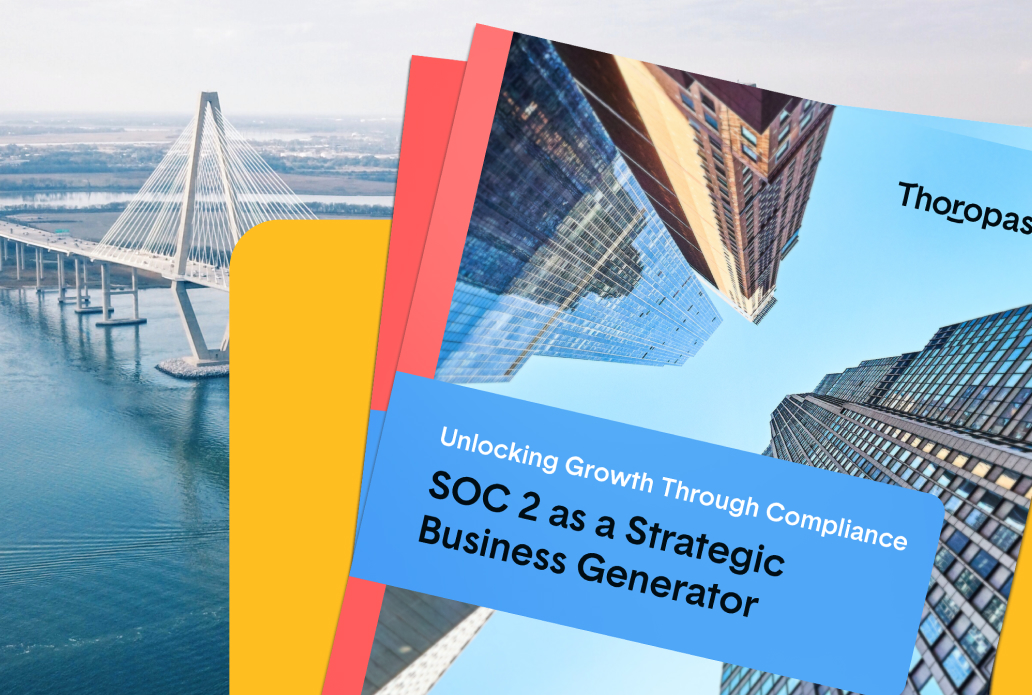
Related Posts
Stay connected
Subscribe to receive new blog articles and updates from Thoropass in your inbox.
Want to join our team?
Help Thoropass ensure that compliance never gets in the way of innovation.




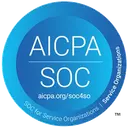


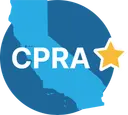




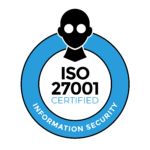

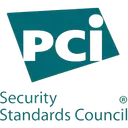
.png)